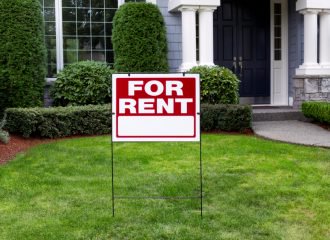Buy-to-let is becoming more and more popular in the United Kingdom. Tumbling mortgage rates, relaxed pension laws and rising property prices are just some of the reasons for the surge in activity in the market.
However, buy-to-let is as not as simple as just purchasing a property and watching the money roll in. All prospective landlords must take a number of considerations into account before they take the plunge into the rental market. Here at Landlord News, we are committed to providing information for both would-be and existing landlords in order to make the step of becoming a landlord as smooth as possible.
What is buy-to-let?
Put simply, buy-to-let is a type of property investment. The first thing to consider is why to become a buy-to-let landlord? Well, there are undoubtedly a number of advantages, including but not limited to:
- long-term investment
- capital growth
- a regular income
- a less volatile market than others such as the stock exchange
- property can be passed down to younger generations in family
- constant demand
- tax advantages
The purchaser will normally however buy a property with the intention of achieving two key goals:
- Firstly, the landlord will want to achieve a regular income from their investment, by renting their property out to one or a number of paying tenants.
- Secondly, investors will hope that their investment will increase in value over time, again securing them substantial gains
Choosing the right property
Of course, choosing the correct rental property in which to invest can and should take time. Landlords must be sure that they are thorough in their research of the characteristics of a home. In addition, landlords should remember that they are choosing a property as a form of investment and not as a second or holiday home. As a result, landlords should put their personal preferences of features such as size and location to one side and focus purely on the financial aspects.
As a general rule, landlords should be conscious that a property offers:
An affordable purchase price
Landlords must ensure that they do not stray over budget when buying a buy-to-let property. This will give them more room to manoeuvre when making improvements and necessary maintenance to the home.
A good location
Many landlords do not conduct sufficient research into the area in which they plan to rent. It is important to look into the region in terms of what demand is like, what typical asking prices are and what the typical monthly rents total. Additionally, landlords should have a target market in mind. For example, those looking to rent to students should choose a property in close proximity to campuses and travel links.
A sufficient rental return
The landlord needs to make sure that returns on their rental property cover features such as the mortgage and essential maintenance costs. To avoid operating at a loss, buy-to-let investors must thoroughly outline their outgoing costs against their potential incomings. A well-maintained rental property will attract interest, but it is still crucial to have a good indication of regional rates and more importantly, a sound knowledge of finances.
Minimal need for improvements
Though all properties need some TLC from time to time, landlords should make sure that they have checked all features of the property to save expensive maintenance surprises further down the line. A lick of paint or touches of gloss are a lot cheaper than a new boiler!
What’s more, landlords should maintain the mindset of longevity. Different to property development, where renovators look to buy, refurbish and sell in quick time, buy-to-let is a long-term business. Profits from this type of investment come from sustained rental income and, over time, hikes in overall property value.
Rental income
As mentioned, landlords should make sure that their investment is worthwhile by ensuring that the income they receive from their tenant(s) covers all outgoing costs by a clear margin. Outgoing costs incurred by a typical buy-to-let landlord include:
- mortgage payments
- routine maintenance
- gas and appliance safety checks
- council tax and other bills
- insurance payments
What’s more, it is possible that investors do not want to be involved in the collection of rent or the maintenance of a property. In this instance, they may choose to have a letting agent to look after these duties on their behalf. Of course, this will incur a further cost, normally between 10%-15% of the achieved rent. Landlords must weigh up the option of either being ‘hands on’ or reduce their profits by taking more of a back seat.
Rental yields
A common term used in the buy-to-let market is rental yield. Put simply, this is the total annual rent achieved given as a percentage of the total value of the property. This is an important measure for landlords as it shows the relationship between over costs and returns. These considerations must be prioritised as crucial in order to maximise overall profits.
Taking a property in a prime London location can show an example of why this is so important. This will undoubtedly achieve a high rental income, but the yield or the income the property gains as a percentage of what it costs to buy could be much less than that of a semi or mid-terrace property.
Types of property
Another important consideration for landlords is which type of residential property they wish to invest in. Many will have a basic idea but it is vitally important that landlords have a target market that fits with the home they are choosing.
Houses
Terraced, semi-detached or detached? Traditional or a modern new-build? There are a number of considerations when it comes to choosing a house. Other choices include age, the number of bedrooms and features such as garages or conservatories.
The best advice for landlords unsure on what type of buy-to-let property to invest in is to look at how a property would satisfy demand in their desired area. If the region is well populated by families, then a house may well be the correct choice. However, if the area is predominantly a student or young professional hub, then a smaller home will be more appropriate.
Houses typically bring with them benefits such as longer rental periods and more chances towards potential capital growth.
Apartments
Changes in demand trends over the last few years have seen single occupancy properties more sought after than ever. This has been boosted by the number of young professionals moving away from their parental home to search for employment. Additionally, high divorce rates and the lack of enough houses to meet demand is also seeing a rise in people searching for this type of property. Landlords could look to cash-in on this growing market.
Houses in Multiple Occupation (HMO)
These types of property are common when landlords are looking to invest in regions where there is both a high-population and high-demand for rental living. Considerations for landlords looking to buy this type of property will include whether they wish for it to be tenant-ready, or if they wish to covert an existing property into bedsits or flats themselves.
The obvious benefit of HMO’s is that rental incomes from three or more tenants will normally be greater than if the house was left as a single dwelling. A downside is that HMO’s typically require more work than other types of property.
Student property
Within Britain’s university towns and cities, students have a big impact on the housing market. With thousands of academics attending each year, demand is always high for property, particularly homes, flats and purposely-built student blocks.
Despite seasonal occupancy, void periods in student accommodation tend to be minimal, as contracts are often yearly. Universities work closely with landlords to ensure they are booked-up for the next academic year. In addition, students are also statistically proven to be good at meeting rental deadlines.
Landlords wishing to become a student landlord however must be prepared to undertake a lot of work, should they choose to not to go through an agent. Typically, students are more prone to causing damage to a property and more maintenance is required as a result. Additionally, landlords should be aware that coming to sell a student property could be difficult.
Overseas Properties
Of course, would-be buy-to-let landlords may not be interested in properties in Britain. Tourist markets in popular overseas locations are proving more of a draw to small-scale investors. Holiday apartments and flats in some of the biggest overseas cities all appeal to the short-stay renters, which can generate high returns at peak-times.
The main drawback is that rental demand is likely to be seasonal. What’s more, overseas investments are more-tricky to manage as normally, they are maintained by an agency. However, with the right support and if a landlord spends time doing sufficient research on location, overseas properties can deliver fantastic returns, with the potential for quick capital appreciation.
Old or new?
Choosing the type of property is not the only consideration for budding buy-to-let landlords. Another important choice is whether to purchase an existing property or one that is still in its planning or construction stage. As with every consideration, there are advantages and potential disadvantages.
Existing properties
If a landlord is looking for an existing property, then the clear advantage is that they can see exactly what they are buying. As such, they can assess advantages such as:
- condition
- appearance
- fit with community
- amenities
- previous tenancy agreements
- appliance history
Sometimes, landlords may even be able to secure a buy-to-let property with a previously established live-in tenant. Buying an established rental home enables landlords to produce a fairly accurate financial plan.
Refurbished Existing properties
A further type of existing property is one that is being either re-furbished or re-purposed. Examples of a re-purposed home are a house that has been changed into a HMO or a larger property that has been converted into flats.
The beauty of a refurbished exiting property is the extensive choice of improvements that can be made. Landlords could choose to settle for minor renovations to already-established homes with proven track records of demand or go for full conversions that result in a change of use.
If a landlord prefers investing in a property that has been drastically changed, there could be uncertainty about the finished article or how quickly tenants can be secured. However, developers often provide tenancy guarantees to alleviate any concern.
A clear advantage to newly renovated properties is that they will be marketed as in a first-class condition, meaning that the landlord shouldn’t face any expensive repair or maintenance payments.
Off-plan properties
Carrying probably the most-risk to new investors are off-plan properties. Generally, these are units that developers of new residential schemes are keen to sell-off, before all properties are complete. This means that the investor is offered homes at a reduced price, with added risk.
By way of assistance, developers usually provide details of the likely make up of their potential tenants and about typical demand in the local area. Despite potentially being helpful, would-be landlords should remember that these details are only to be used as a pointer. Before deciding to invest in an off-plan property, landlords must make sure they conduct their own thorough research.
There is no sure-fire way of knowing which of these investment opportunities will provide the best returns. A number of determining factors, such as a surge in employment or developments in an area, will go a long way to deciding how successful an investment proves to be.
One thing that a landlord must do is to research all features that will assist them in buying the perfect investment property. Investigations into typical tenant demand in the area, talking to other landlords for their experience and looking at seasonal trends will all help. However, possibly the best way to start is to examine the location of the potential investment.
Location, location, location
Without question, choosing a suitable location is one of, if not the greatest consideration that a buy-to-let landlord has when looking to invest in property. It is so important to choose a good location as it is local forces that will essentially determine how successful an investment is.
Property markets vary from one town to the next, never mind from country to country. As such, it is critical that landlords understand the demographics of a community and how this affects demand for property. For landlords unfamiliar with a certain area, they should enlist the help of a property advisor. This is particularly true for landlords looking to invest abroad, where different legalities and planning processes must be taken into account. Despite being another expense, expert help may save lots of money in the future.
When assessing location, market demand in a certain region should be closely looked at. Potential questions that a landlord should ask are:
- where is the demand?
- where it is coming from?
- is it following any trends?
- what is causing these trends?
- could anything happen to change these patterns?
Types of factors affecting demand vary between locations. There are however solid examples of how trends differ in the UK property market in comparison to the overseas.
UK property market
At present, there is a huge imbalance in the UK property market. The South-East in particular has seen a considerable hike in rental prices. However, high purchase prices in and around the capital have led to some of the lowest rental yields in the entire country.
As such, buy-to-let investors looking for both high and guaranteed yields, the property markets in the North of Britain look a good bet.
This said, the current climate for buy-to-let investment in the United Kingdom is actually very promising. Demand is at a record high, with economic and social changes such as tumbling unemployment contributing massively to this. A chronic lack of affordable homes, an increased life expectancy and higher divorce rates have all led to record-high rental demand.
Mortgages
Another key reason why buy-to-let investment is proving so popular in the UK is the ongoing mortgage battle between lenders. A whole-host of low interest, fixed-rates mortgages are on offer to landlords and with specific buy-to-let deals, investors are more likely to secure an agreement than first-time buyers.
Landlords must take the time to assess which of the deals is right for them and their investment. Speaking to mortgage advisors and assessing the options available for their chosen property is crucial. In addition, landlords must be considerate of the fact that interest rates are likely to rise next year and must assess the impact that this may have on their finances.
Buy-to-let overseas
Whilst the domestic property market will be the area of choice for the majority of buy-to-let landlords, some of the greatest returns lie in overseas ventures. In the main, considerations for landlords looking to purchase property overseas should be the same. The same through research into location, demand and trends should be applied. Investing in property outside of the UK however centers on supply and demand.
People looking to invest in property away from British soil should look at demand and consider:
- where the demand comes from
- is there sustained demand for rental accommodation
- tourist influence
- what prices renters in the region currently pay
- what the appropriate prices for property are
Details
As in all investment, studying details before purchasing in critical. Arguably, this is more so when choosing to purchase overseas. However, access to key details concerning a property is arguably the biggest obstacle to foreign investment. Many landlords do not have the means to carry out their own research into prospective purchasing opportunities outside of the UK. The main difficulties facing landlords looking to invest abroad are:
- different legal and financial regulations
- ascertaining local knowledge of the market
- working out the effects of the local and national economy
- the volatility of the regional market
Advisors
With this difficulty in mind, landlords should look to enlist the help of an investment advisor when looking to the foreign market. This support and the relevant information that is provided could be the difference between a successful or failed investment.
Agents can help not only to avoid volatile markets, but also introduce in-country specialists. These specialists will be able to assist with features such as:
- what type of property will lead to the best returns
- securing the best financial packages
- where to invest
- bookings
- payments
- maintenance
- advice on upcoming developments that could affect demand
Landlords should outline exactly what they require in terms of assistance from international advisors. In addition, all costs should be agreed upfront to avoid any nasty surprises further down the line.










